Notes making is a very crucial aspect in an IAS aspirants life. One need to learn this art early in his aspirant life to succeed in this exam. One should be able to prepare good notes, in minimum time along with remaining focused on optional/ essay/ ethics paper.
Like all normal aspirants (some are god gifted/blessed who clear without having to prepare notes), we also faced problems that most of you might be facing right now. Problems like:
- What all resources to cover? ( Hindu, IE, monthly magazine, vision, insights, PIB etc. )
- Should I follow e-paper or old school paper version?
- Should I follow RSS feeds, Gists, insight compilation etc.?
- How to prepare notes and what to write in notebook (everything seems important and it takes hours)
- How to arrange my notes so that I can revise it quickly?
- Should I keep separate notebook for GS1, GS2, GS3, GS4 and Essays?
- How and from where to prepare notes for Ethics and essay?
Does these questions ring a bell? Sure, they do. So, keep reading.
Let us walk you through some of the ways students make notes and what are their pros and cons. In the end, we will tell you how IAS4Sure prepares notes.
Method 1 – Amateur method
Look at the pics below.
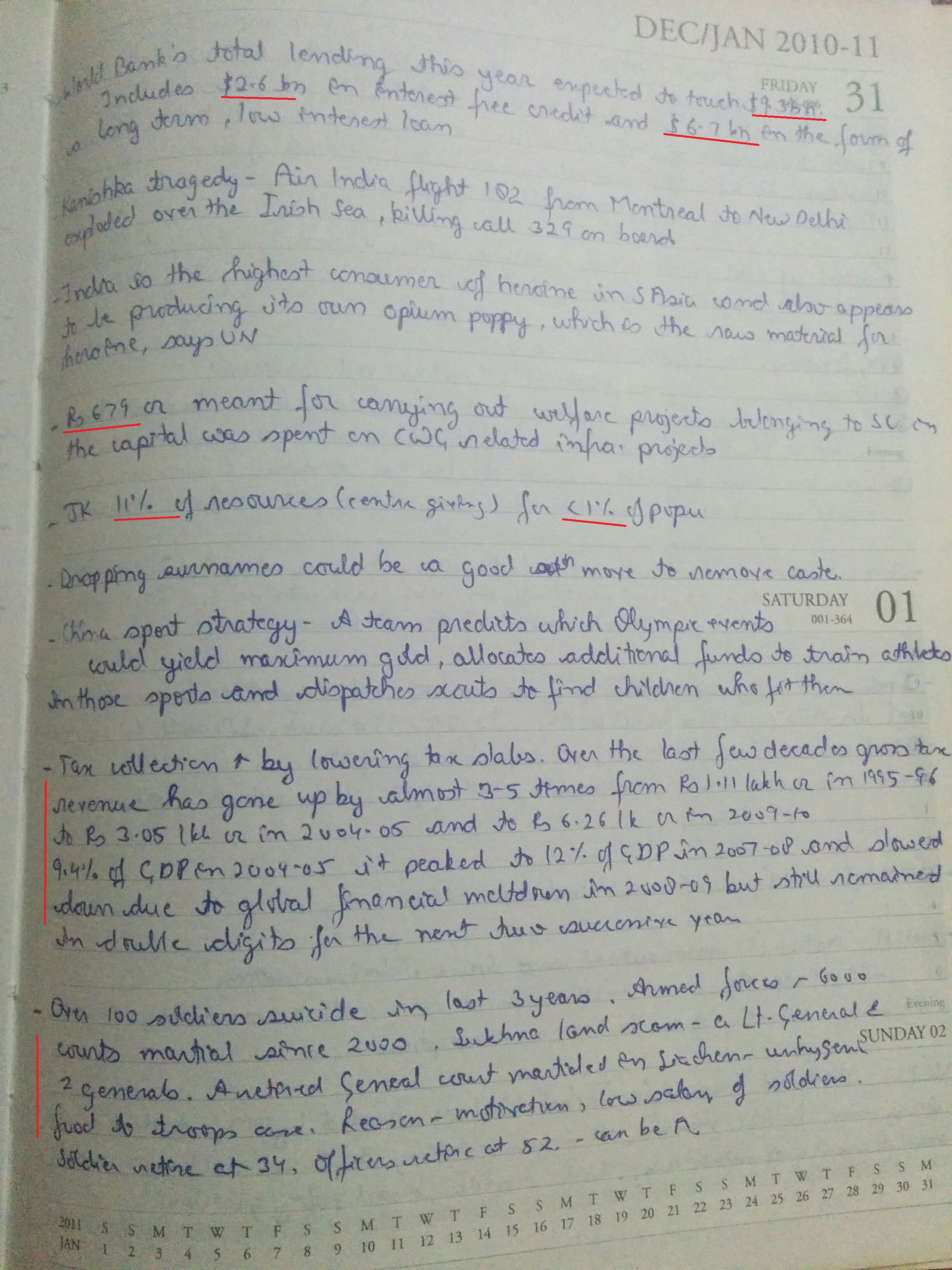
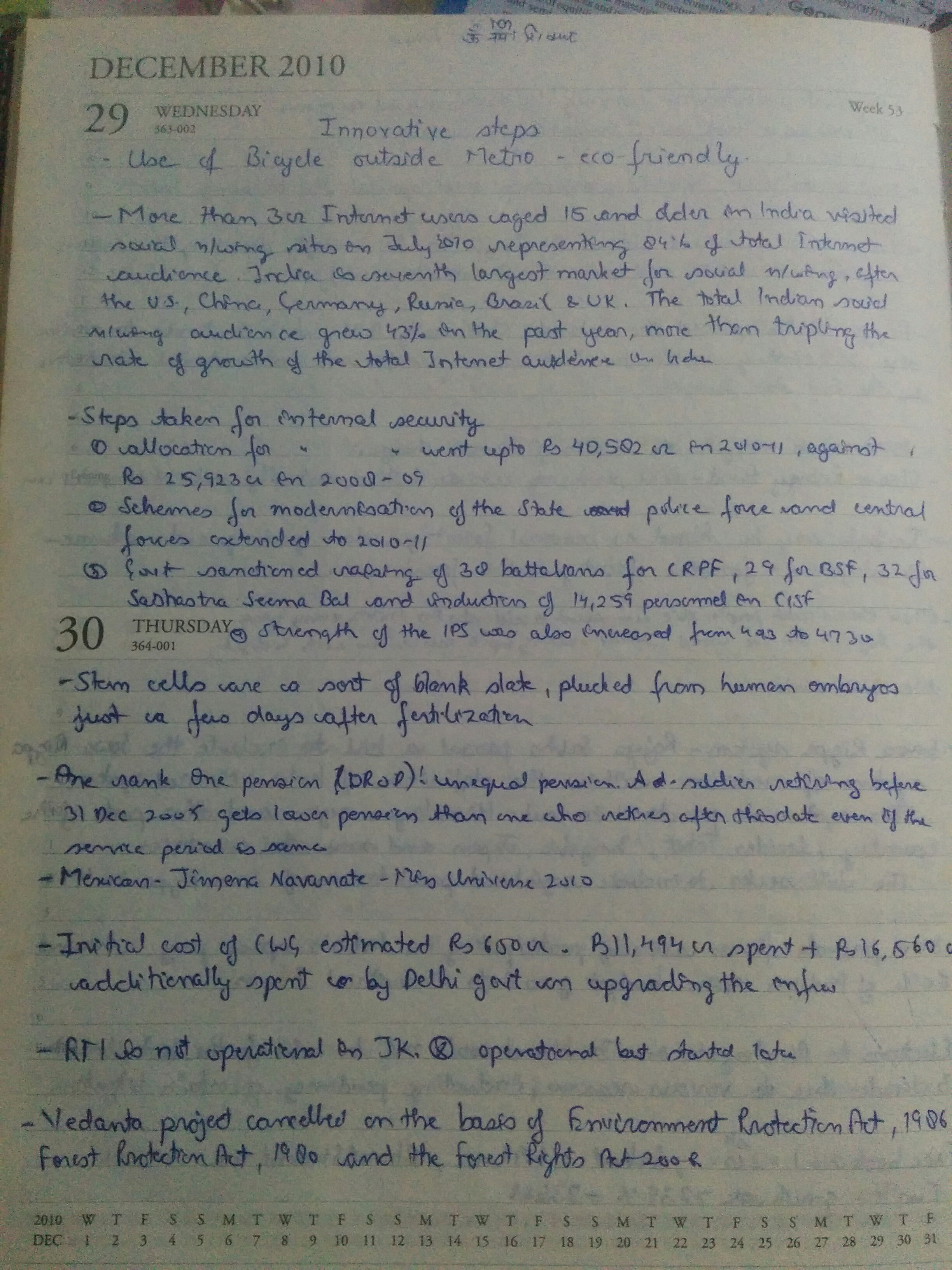
If you are able to understand what is wrong with these notes, then congrats, you are not on a suicidal mission. But, if these notes looks fine to you, then you have to do a lot of learning.
These notes are useless because:
- They are full of useless facts
- They are not organised by topics
- They are not complete (important details are missing while useless facts are noted)
This happens with lots of students when they are not able to judge, what to write and what to leave. We have seen some students noting down statements of politicians verbatim in their notes. (No offence to anyone. All pics are writer’s personal notes in his various attempts)
Method 2 – Lazy method
Preparing notes is a tedious task. It takes hours to read Hindu and IE and prepare good notes from them. Add some more hours if you decide to cover Insights/PIB/Vision etc.
So, a lazy person decides to underline newspaper cuttings and start organizing them in files. He thinks that he would revise underlined portion in these cuttings in the end. Its a short cut method to prepare notes.
Similarly, students underline books and write in its margins to revise it. Some underline with different color which denotes number of revision (ex. pencil – 1st reading, Blue – 1st revision, Red – 2nd revision, Pink marker – 3 rd revision etc.). See below images to understand it.
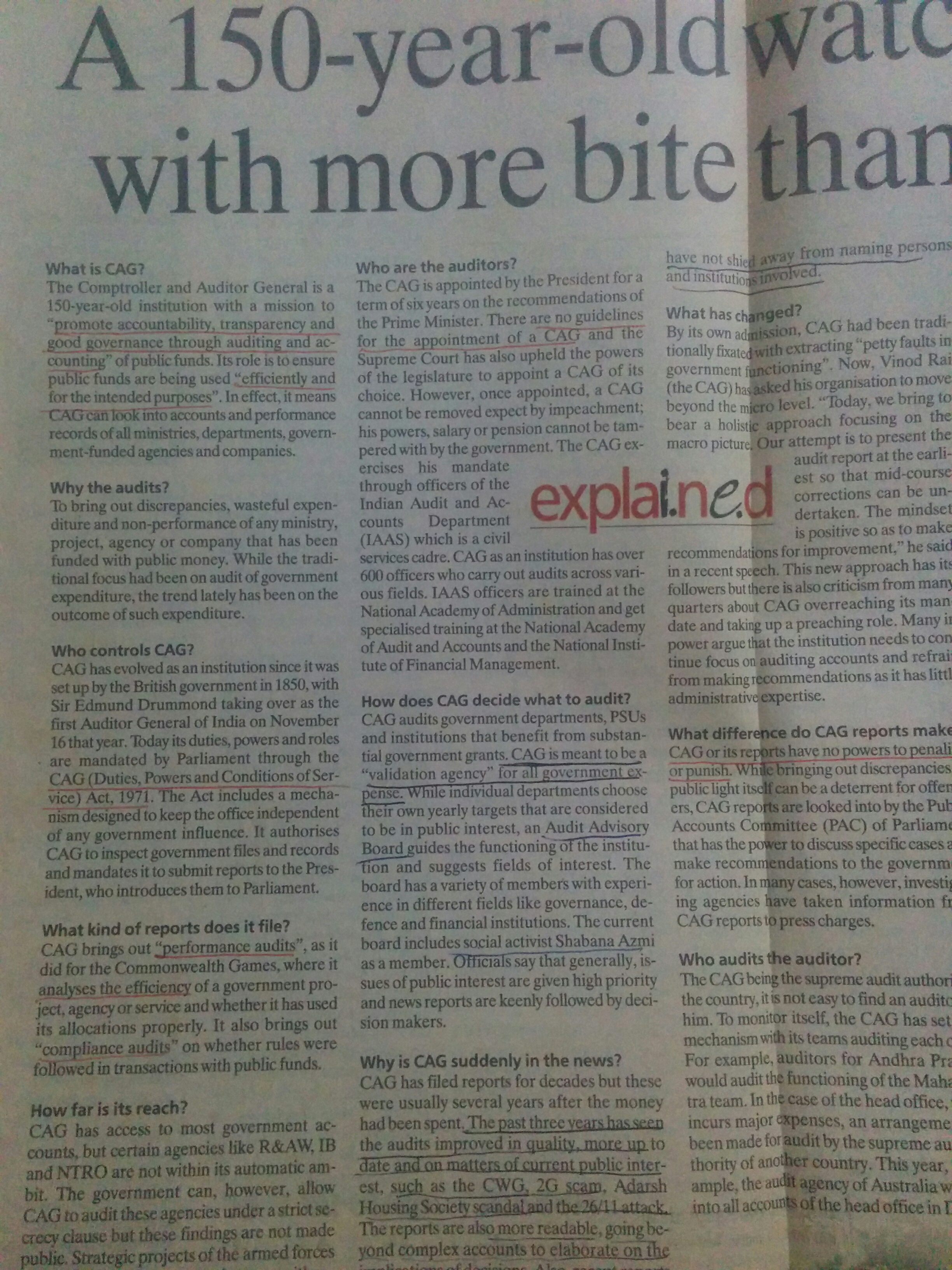
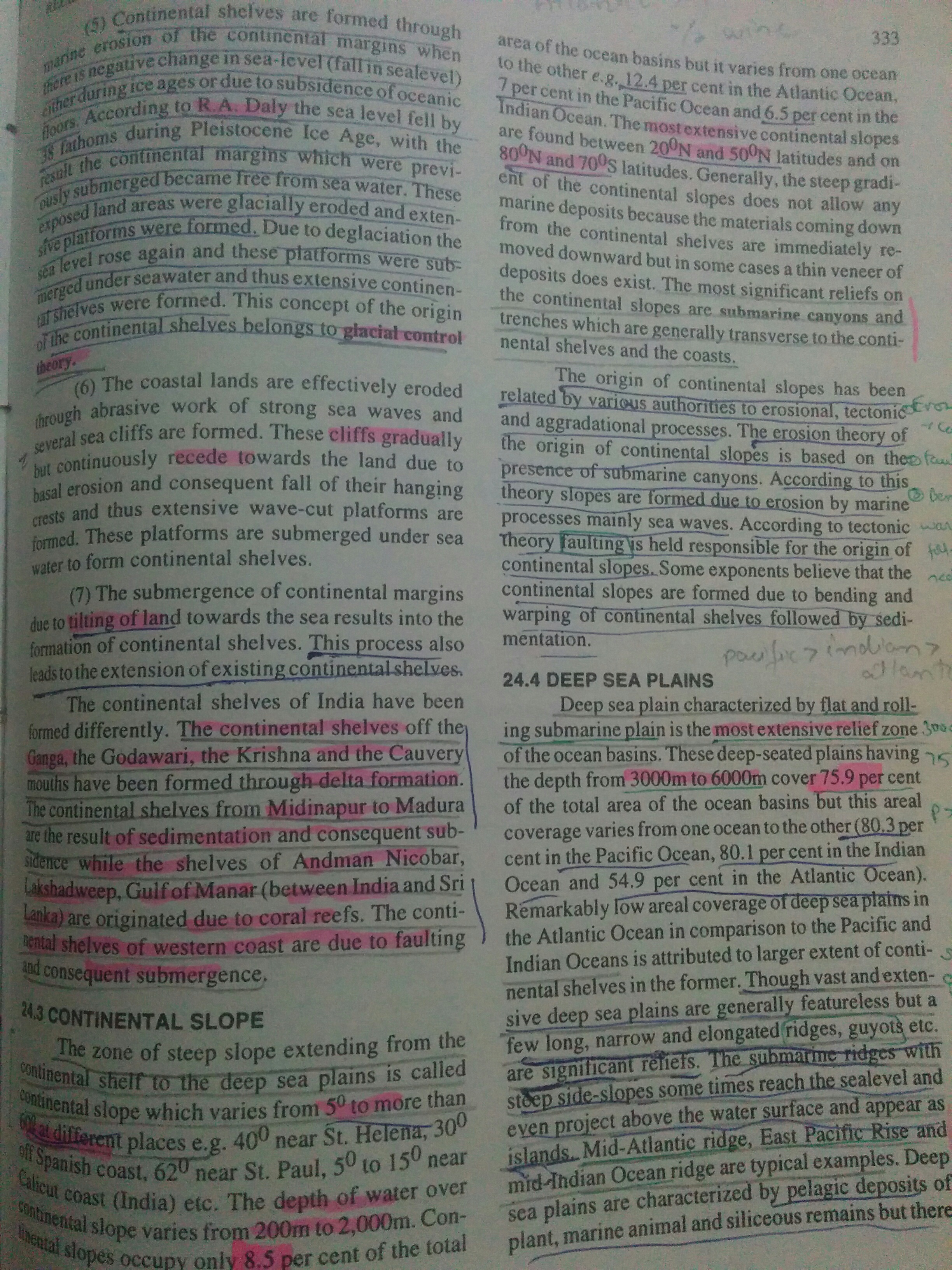
Many students do it successfully. But, most of them fail to revise it. These newspaper cuttings keep on piling and in the end situation becomes hopeless. So, when mains exam comes, in this hopeless situation, students go for ready made material in market which leads to average marks in GS.
Similarly, while revising underlined portion in books it is often hard to ignore non-underlined portion and in the end student ends up reading whole book again.
Method 3 – Expert method
An expert aspirant keeps his notes crisp from very beginning keeping in mind how he would revise them. He knows that multiple revisions are must to be able to recall answers quickly in exam hall. He organises his notes paper wise/ topic wise for quick revision. He would maintain separate notebooks for each paper and would maintain an index of topics covered in that notebook. For each topic he would keep 4-5 pages reserved so that whenever something new comes about that topic, he just adds that info in reserved space. In that way, he would have 4-5 page notes on all important topics. See image below to understand.
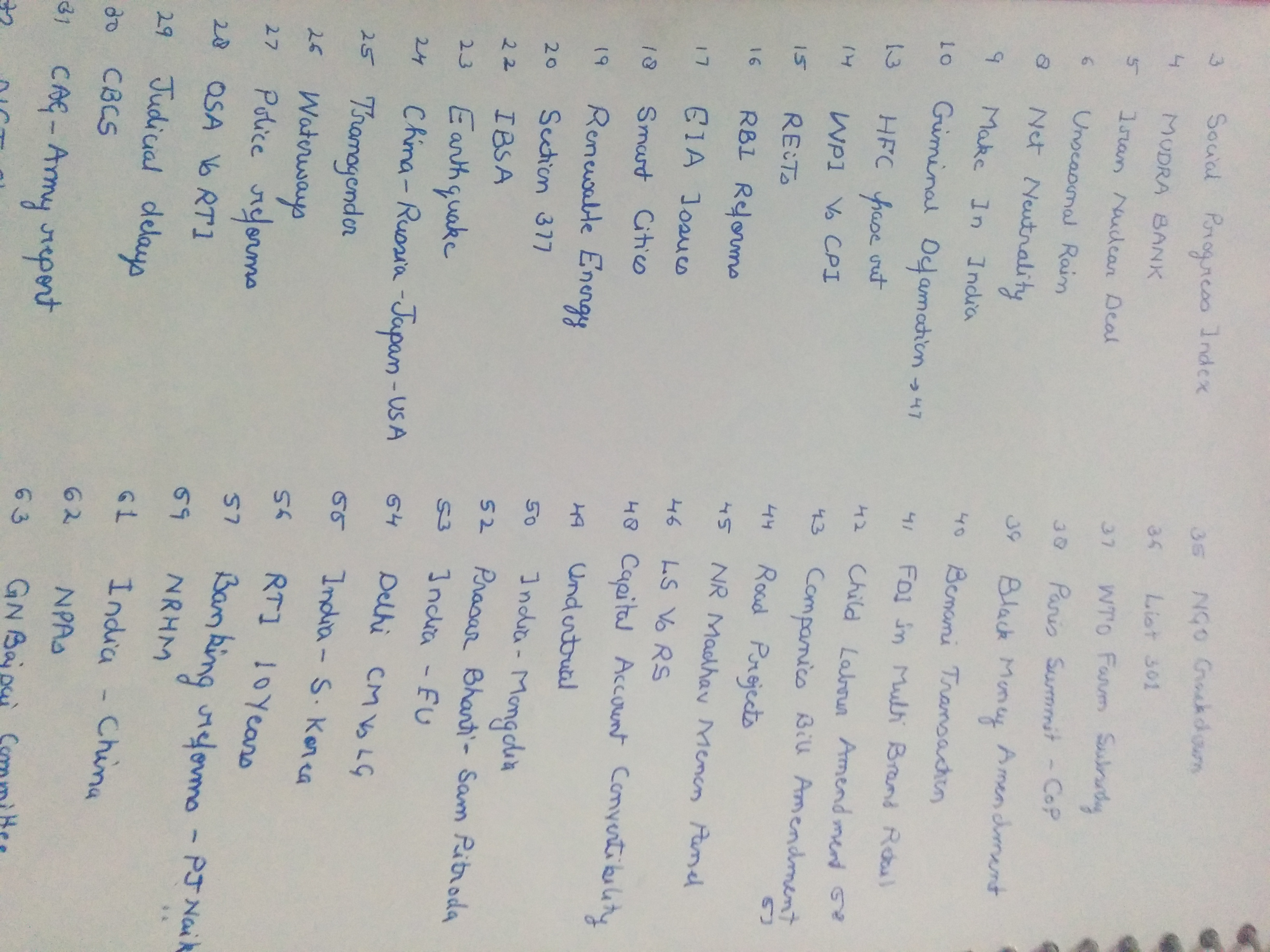
This is most efficient practice of making notes by a single guy. But it takes lots of time to cover everything and prepare notes. So, the next obvious thought would be to divide tasks among a like minded group of guys and prepare notes in a collaborative manner.
Method 4 – IAS4Sure method
So, to overcome the time constraint, we had divided topics/papers/sources among like minded group of aspirants. Everybody performed his/her allotted and shared in a central location (OneNote). In this way, we were able to cover almost everything humanly possible. Not only that, our notes were at one place, searchable by date/topic, we had a copy on our mobiles and thus we could revise them fast.
Last year (2015), we were able to revise our notes at least 4 times before exam. Since our notes were organised by paper/topics, we could revise each paper before exam day which increased our recall power in exam hall.
Obviously, there were some bouncers like khap panchayat question (2011 issue) but still we were able to attempt most of the questions from our notes.
Since then, 1000s of subscribers have used IAS4Sure notes. They subscribe to our notes which are regularly updated, use it as a wiki to read all about a particular topic, copy and modify them as per their own needs. Best part is that such online notes can be read anywhere on mobile version of Onenote or Evernote. They are easy to edit and are searchable. You can see screenshots here. So, it is highly advisable to follow these pattern of notes.
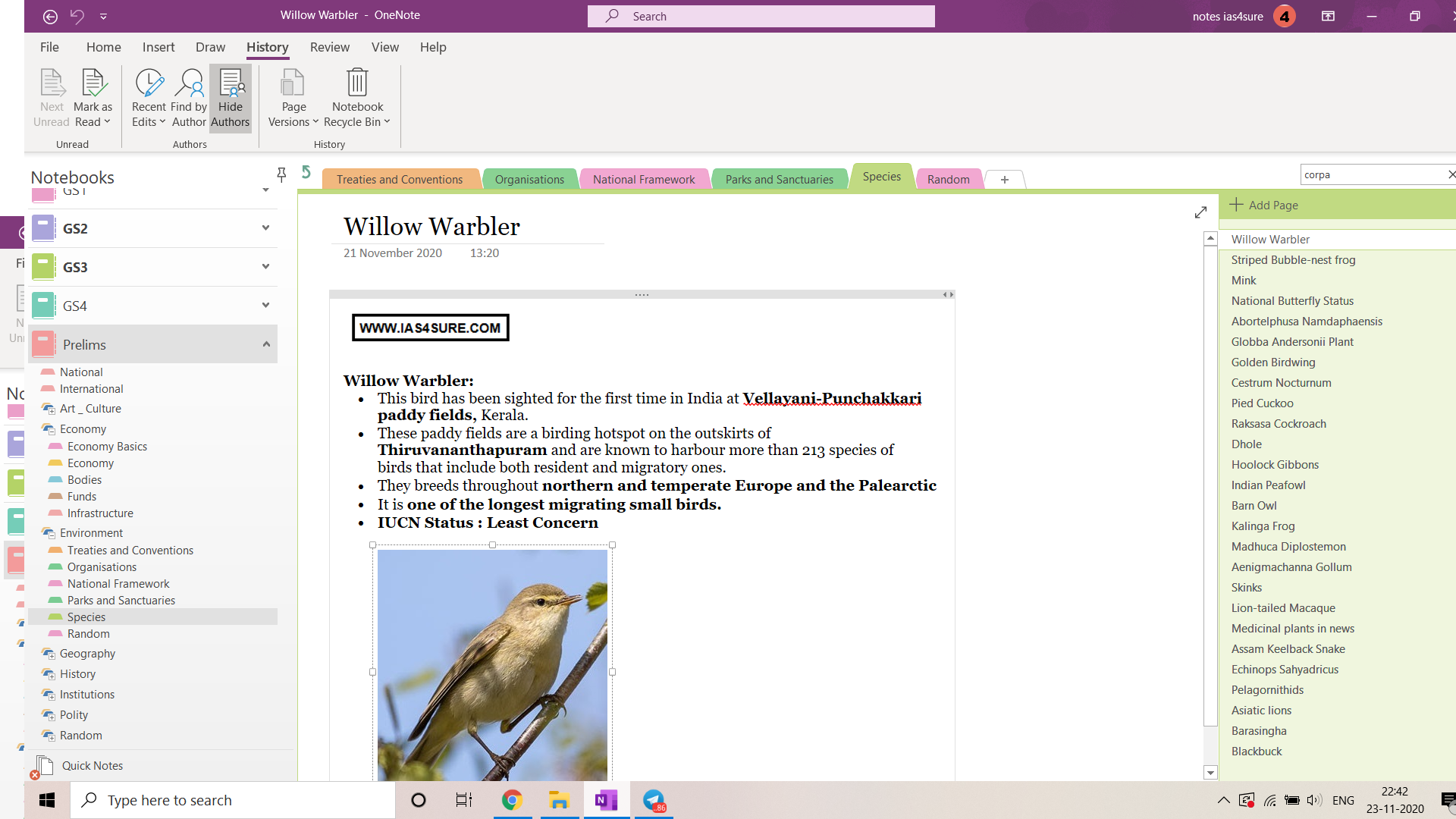
If you have any queries or want a demo of notes than you can contact us at 06397107065 (whatsapp/telegram only)